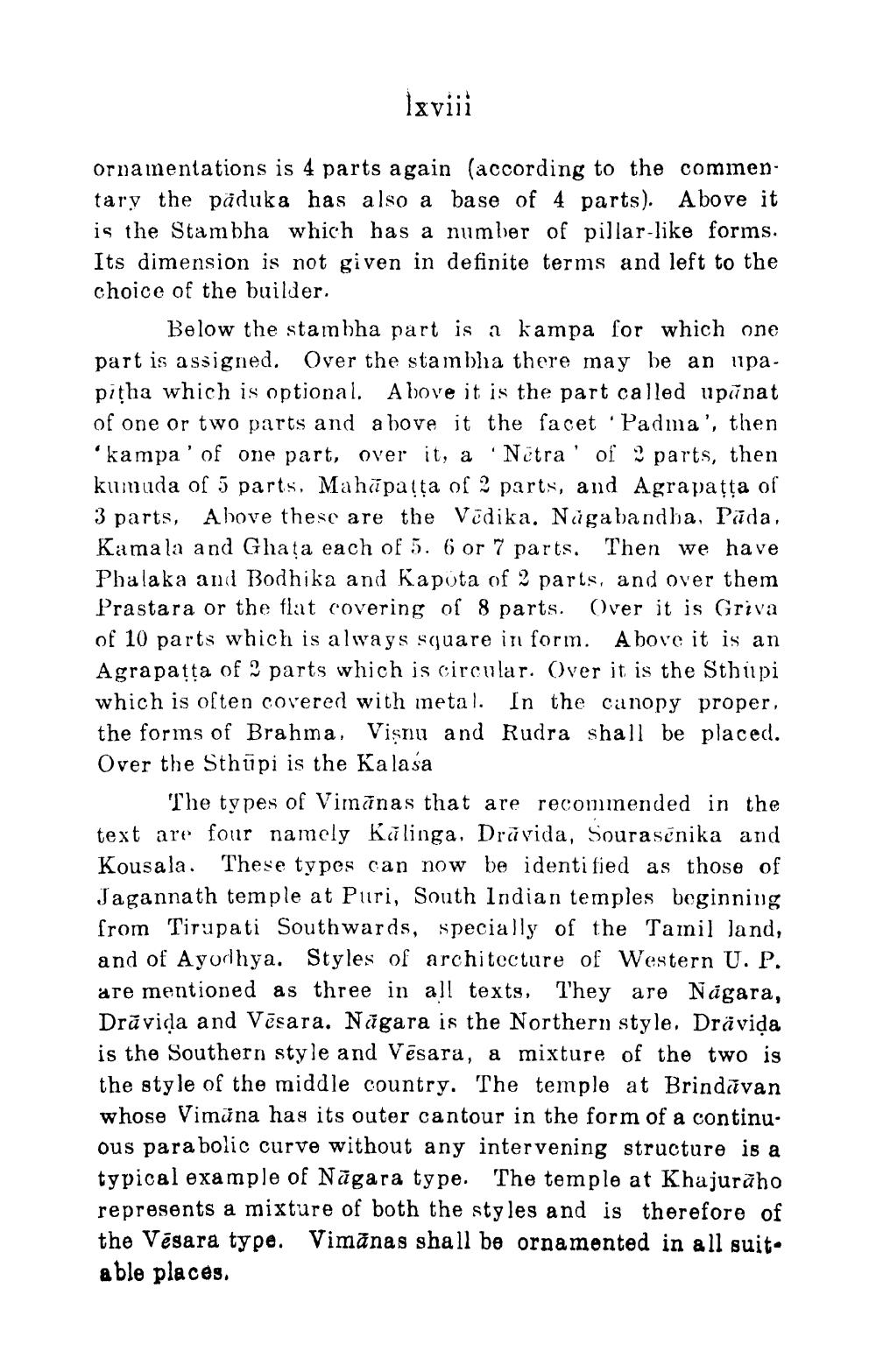________________
lxviii
ornamentations is 4 parts again (according to the commentary the paduka has also a base of 4 parts). Above it is the Stambha which has a number of pillar-like forms. Its dimension is not given in definite terms and left to the choice of the builder.
Below the stambha part is a kampa for which one part is assigned. Over the stambha there may be an upapitha which is optional. Above it is the part called upănat of one or two parts and above it the facet Padma', then 'kampa' of one part, over it, a Netra of 2 parts, then kumuda of 5 parts. Mahapatta of 2 parts, and Agrapaṭṭa of 3 parts, Above these are the Vedika. Nagabandha, Pada, Kamala and Ghata each of 5. 6 or 7 parts. Then we have Phalaka and Bodhika and Kapota of 2 parts, and over them Prastara or the flat covering of 8 parts. Over it is Griva of 10 parts which is always square in form. Above it is an Agrapatta of 2 parts which is circular. Over it is the Sthupi which is often covered with metal. In the canopy proper. the forms of Brahma. Visnu and Rudra shall be placed. Over the Sthupi is the Kalasa
The types of Vimanas that are recommended in the text are four namely Kalinga. Dravida, Sourasenika and Kousala. These types can now be identified as those of Jagannath temple at Puri, South Indian temples beginning from Tirupati Southwards, specially of the Tamil land, and of Ayodhya. Styles of architecture of Western U. P. are mentioned as three in all texts. They are Nagara, Dravida and Vēsara. Nagara is the Northern style. Dräviḍa is the Southern style and Vesara, a mixture of the two is the style of the middle country. The temple at Brindavan whose Vimana has its outer cantour in the form of a continuous parabolic curve without any intervening structure is a typical example of Nagara type. The temple at Khajuraho represents a mixture of both the styles and is therefore of the Vesara type. Vimanas shall be ornamented in all suit. able places.




